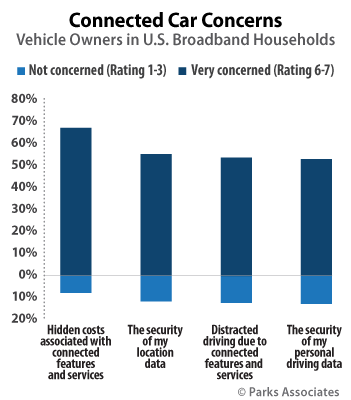- Research Expertise
- Smart Home: Products And Services
- Consumer Electronics And Entertainment
- Broadband And Mobility
- Connected Health And Wellness
- SMB
- Global Research
- Events
- Event
- Resources
- Our Services
- Company
- About Parks Associates
- Smart Home: Products And Services
- Smart Home Devices, Automation, Controls
- Energy Management
- Residential Security
- Consumer Electronics And Entertainment
- Consumer Electronics Devices
- Video Services: OTT, Pay TV
- Entertainment Content: Video, Audio, Gaming

 The connected car and smart home markets are both at an early stage of development, but in many ways they have been growing in parallel with each other: both are being enabled by falling costs of sensors, networking technologies, and data storage, as well as by expanded cloud services, the mass adoption of smartphones, and consumer demand for the connected lifestyle.
The connected car and smart home markets are both at an early stage of development, but in many ways they have been growing in parallel with each other: both are being enabled by falling costs of sensors, networking technologies, and data storage, as well as by expanded cloud services, the mass adoption of smartphones, and consumer demand for the connected lifestyle.